How to Write a Video Essay
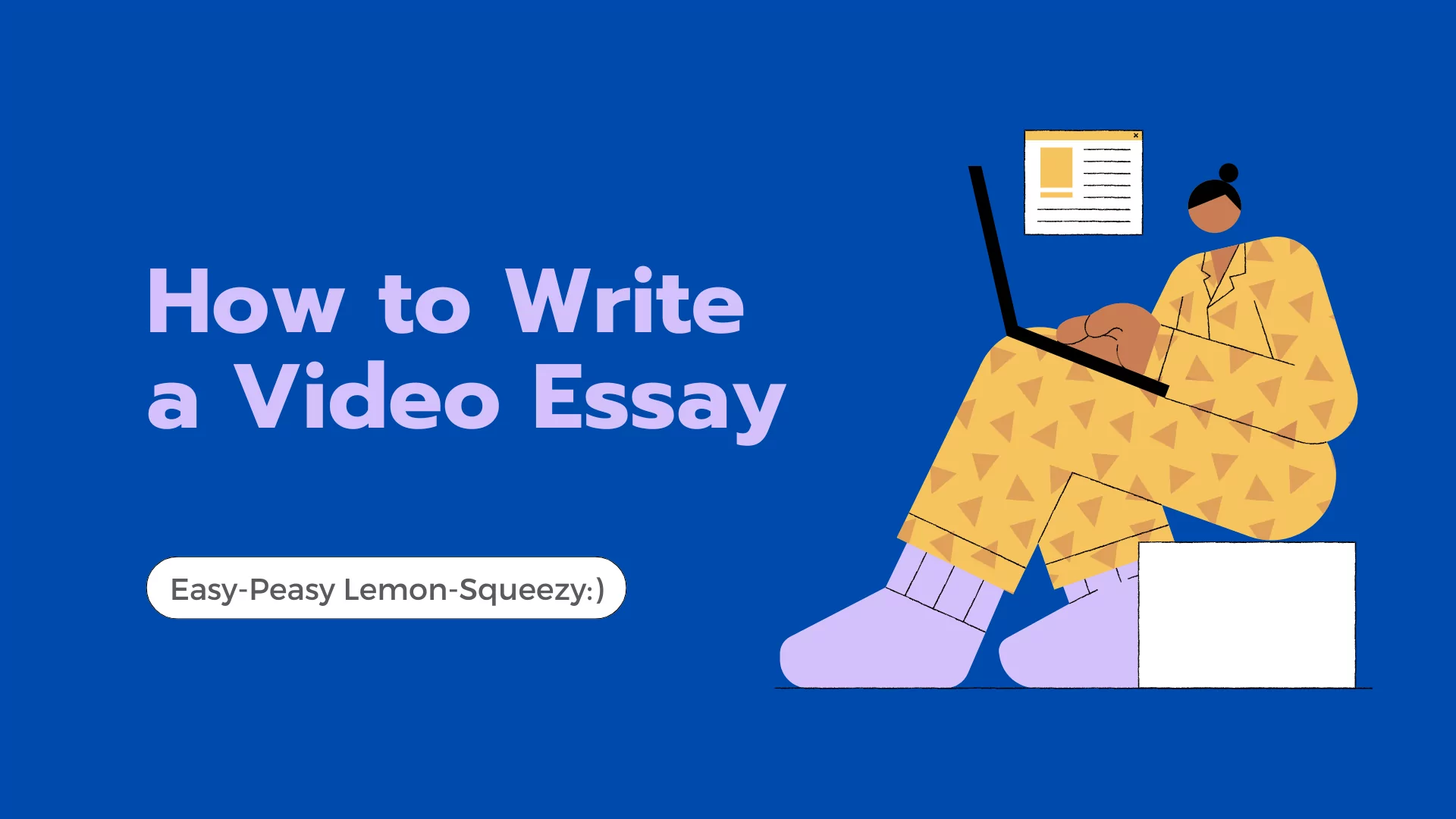
Writing essays may not be anyone’s favorite task, but what if we told you there’s a way to make it more dynamic? Welcome to the world of video essays. These creative blends of visual and written storytelling have taken over platforms like YouTube, allowing students, content creators, and even educators to share ideas in a completely new way. Now, while video essays sound fun, let’s face it, they come with their challenges — especially if you’re more used to writing articles on paper. But no need to worry! This guide is here to break things down for you step-by-step, so by the end of it you will be able to create a video material of your own.
What is a Video Essay?
Kicking things off, let’s define what a video essay actually is. Just like a regular essay, you need to develop a clear argument, support it with evidence, and present your ideas logically. But instead of just using text, you combine visuals, narration, and sometimes music to help get your point across.
So, how does a video essay stand out from other types of visual content? Unlike a regular YouTube vlog or a documentary, video essays are structured around a central thesis or argument. The creator needs to put together footage, graphics, and voice-overs not just to entertain but mostly to inform or persuade their audience. Usually, this type of work goes well for analyzing a film, discussing a social issue, or exploring a personal topic.
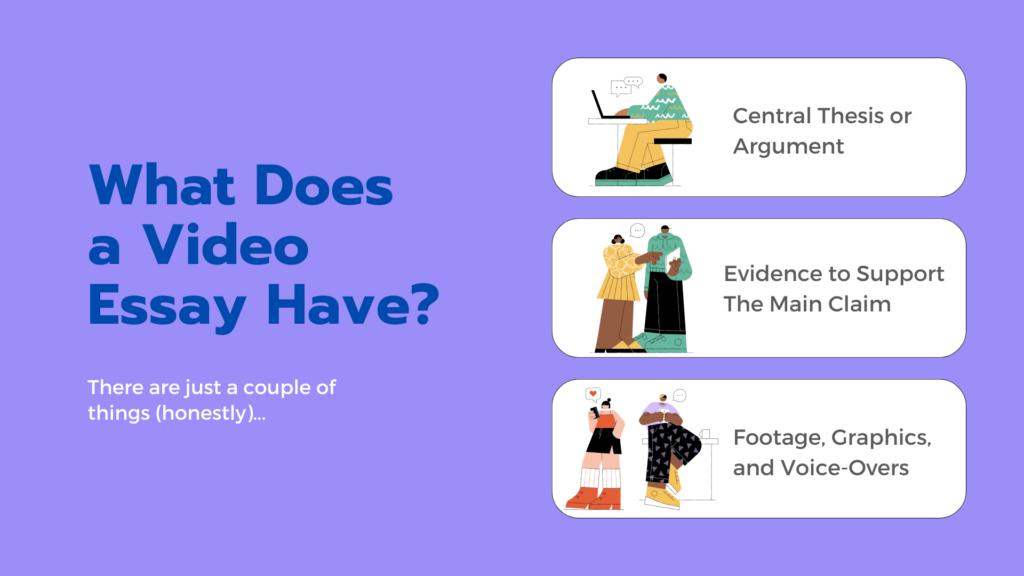
One great example of this format is the YouTube channel Every Frame a Painting. Though, some might say they are more of a documentary-type channel. Still, if you look into them, you’ll that they analyze elements of the film like camera work or sound design and use clips from movies to illustrate their points, creating something that’s not only informative but a treat to watch too.
Video Essay Definition: Structure
Now that you know what a video essay is, let’s break down how to structure one. The structure of a video essay is similar to a traditional essay in many ways. You still need an introduction, body, and conclusion. However, since video essays combine different media, there are some extra elements to keep in mind.
📌 Introduction → Set the Scene
Just like any good essay, your video essay should start with an introduction that grabs the viewer’s attention. This is where you lay out your thesis, explain what your video will cover, and maybe even show a sneak peek of the visuals or ideas you’ll dive into later. Keep it short but compelling.
📌 Body → Dive Into Your Argument
In the body of your video essay, you’ll present your argument in depth, supporting it with visuals (images, graphs, parts of other videos), interviews, or other footage. You can organize the body into sections, each one focusing on a different aspect of your topic.
If you’re analyzing a movie, for example, you could have one section on the cinematography, another on the soundtrack, and a third on character development. Use only relevant cases—like movie clips, screenshots, or quotes—to support each point.
📌 Visuals → Make it Pop
Visual storytelling is key here. While you write your script, think about what visuals will work best with each point you’re making. This could be film clips, images, charts, or even animations. Make sure your visuals match what you’re talking about so your audience can follow along easily.
📌 Conclusion → Wrap It Up
End your video essay with a conclusion that summarizes your main points and restates your thesis. Just like in a traditional essay, you want to leave your audience with something to think about. This is the part where you can reflect on your argument and tie everything together.
Step-by-Step Guide to Writing a Video Essay
As you understand the structure, let’s walk through the steps of actually creating a video essay. You don’t need a fancy camera or editing software to get started—all you need is a solid plan and some creativity (and, of course, your phone).
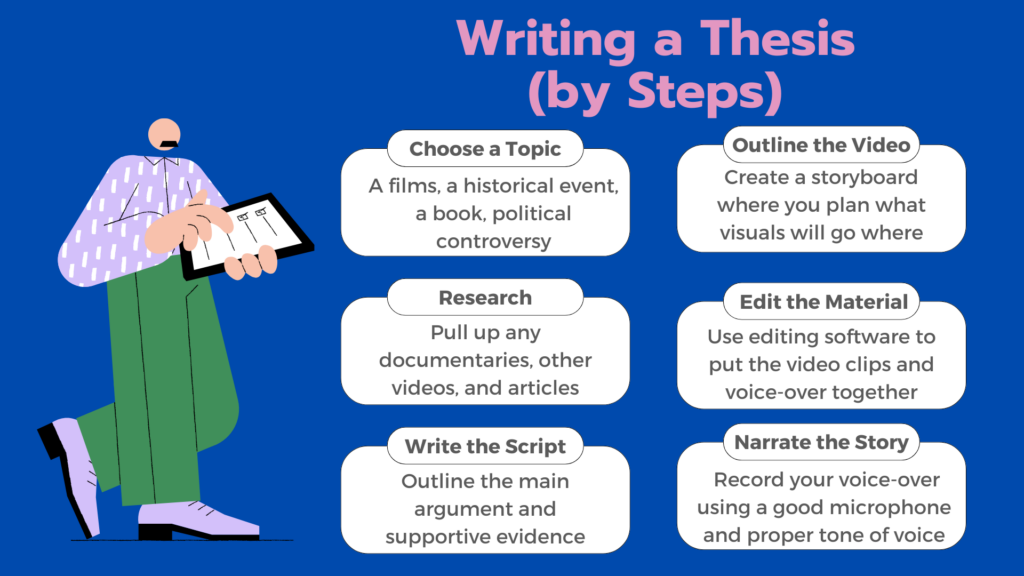
Step 1: Choose a Topic with Textero AI
Pick a topic that excites you. Your video essay could be about anything from a movie analysis to a dissection of a historical event. Whatever you choose, make sure it’s something you can discuss passionately and support with plenty of evidence. Remember, the more interested you are in the topic, the easier the process will be (both for you and later on – for your viewers). Let’s say, you want to write about Hitchcock’s Psycho, but you don’t know where to start. Don’t worry, Textero is here to help.
First things first, type in your keyword. We can start with the title of the movie to keep things simple, but you can also think about additional themes that you would want to explore. In this case, they might be isolation, sexuality, duality, and so on.


Or you can even go further and tie Psycho as an example of shattering the American dream. If something caught your eye, click “Find similar” to browse through the list. Put together as many subtopics as you want to touch on in your video essay; by doing this, it will be much easier to go to the second step—compiling research together—and decide what to focus on more in your work.

Write down the themes and try grouping them based on certain aspects. Maybe chronological order is important for the narrative? Perhaps, you want to add visual examples to certain parts? Jot down everything you can, because now is the time for your outline to take shape. Sorry, no spoilers! Now we talk about research.
Step 2: Research Like a Pro
A well-crafted video essay relies on representative research. Look for clips from documentaries, read articles, or watch other videos on your topic. In general, try to gather all the information you need to back up your argument. Be sure to keep track of your sources and take notes so you can refer back to them later. Don’t just rely on your memory—bookmark those important moments or quotes that will help bring everything together.
After piling up your journal articles, books, and suspicious web pages, time to make your efforts count by uploading the sources to Textero. Our platform can analyze your picks and follow their particular context when generating ideas. With this feature, creating an outline and writing the script itself will be a walk in the park (or at least, a lighter jog). In order for the feature to work best, start by uploading your documents or pasting the URLs; the designated field appears after clicking “My Library” and a little “+” icon at the top right corner. Here’s what the form looks like:

After you upload, say, ten works on Psycho, they all will appear in your library. Through there, any documents (plus some additional sources, if you decide to get Textero’s help during research) will be available in the editor, so you can ask additional questions based on certain works. No made-up critic’s opinions or false research—just straight facts from your literature of choice.
Step 3: Create an Outline for the Video
Now that you set everything up, time to do some actual writing. Take all of the aspects you jotted down during the topic brainstorming and create a rough outline of your video. You can map it out as a storyboard where you plan what visuals will go where, or start directly in Textero’s editor. This will help you stay organized and make sure everything flows smoothly from start to finish.
Think about how you want the viewer to perceive your story. What aspects are important to understand certain takes? Do you want to recap the plot from the get-go or reveal it as the video progresses? Should the narrative stem from main characters like Marion or Norman or include the Sheriff’s perspective too? In order to not limit yourself, start with a blank document and map out your structure in Textero’s editor. Add points on the get-go, format your outline for better organization, stress where you need to add examples.
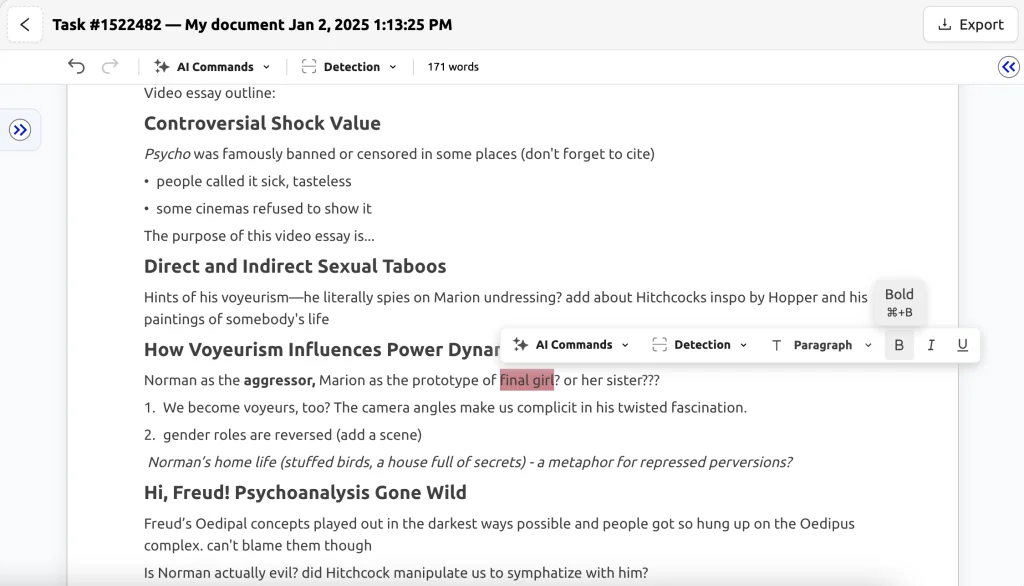
From there, you can bulk up the text and move towards a more balanced, thought-out piece that will become your future video essay.
Step 4: Write the Script
It’s time to start scripting your video with our Essay Writer! Outline your main argument in each subtopic and decide how to present it. Keep your script clear and concise—remember, viewers are watching, not reading. You’ll also want to think about how the visuals will align with your words.
If you need a bit of help with the script, ask Textero to provide you with a first draft. To better guide the tool, don’t forget to add your research and mention the main points you want to focus on. You can do this by creating a new document, clicking the “Generate my essay” button, and the following window will pop up.
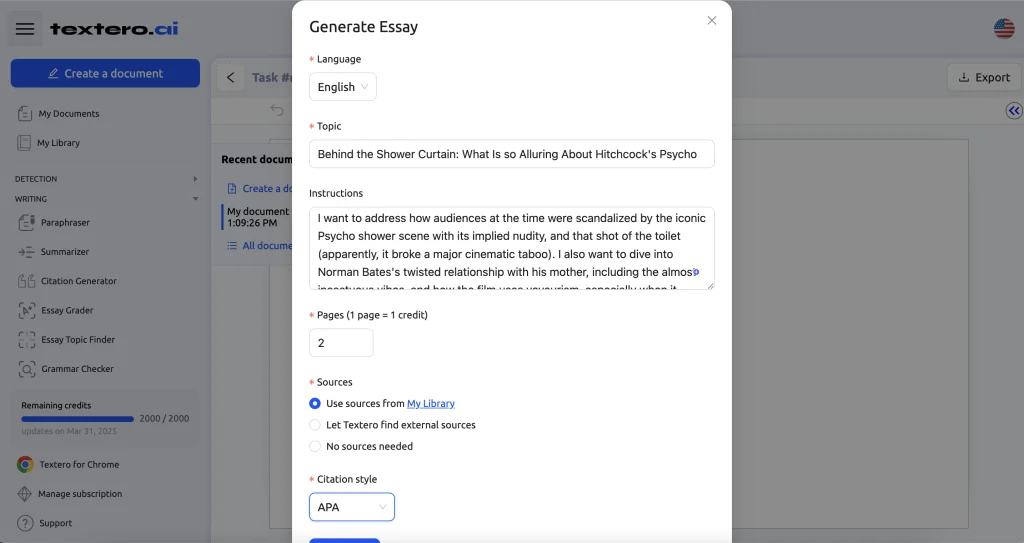
Step 5: Editing is Key
Editing, both as a process of clipping videos and touching up on your grammar, are important. When you feel like the writing part is done, look at your script once more. If you plan on adding quotes or other text inserts from your script, you don’t want to miss a spelling error and accidentally copy-paste it. Re-read your document or ask Textero for a quick grammar check right on the platform.

Well, the other type of editing your video essay allows you to put together visuals and audio so that they form a cohesive whole. Use editing software like Adobe Premiere or even free tools like iMovie to start piecing together the clips, narration, and other content (like images). Make sure your visuals complement your narration and help support your argument rather than distract from it. After checking, export your text to Google Docs for further use.
Step 6: Narration & Sound
Good audio is just as important as what happens on your screen. Record your voice-over using a decent microphone and make sure the audio is clear and well-paced. You don’t have to sound like a professional voice actor—just be yourself and keep it natural. Consider adding background music to set the tone, but don’t let it overpower your narration.
Step 7: Review and Revise
Small, but important step! Once your video essay is fully edited, give it a review. Watch it all the way through to make sure everything is clear and coherent. Ask yourself these questions:
- Does the video flow well?
- Are your points backed up by strong visuals?
- Are there any awkward transitions?
Make adjustments as needed, and don’t be afraid to cut things that aren’t working.
Conclusion
And there you have it—your ultimate guide to writing a video essay! It may seem like a lot at first, but, with time, you’ll find it’s actually a fun and creative process. Just remember, the key to a great video essay is combining strong research, thoughtful writing, and engaging visuals. So, grab your camera, open up your editing software, and get started—your audience is waiting!
FAQ
What is in a video essay?
A video essay is basically an essay brought to life with visuals. It’s a mix of a traditional essay’s argument or idea, combined with things like video clips, images, and sound to make it more engaging. Instead of just reading words, you get to see and hear the points being made. It can cover all sorts of topics—movies, social issues, personal reflections—while using visuals to back up the arguments.
How long is a typical video essay?
There’s no strict rule for how long a video essay should be, but most tend to fall between 5 and 20 minutes. It really depends on your topic and how deep you want to dive into it. Some quick analysis might only need a few minutes, while more detailed or complex arguments could take longer. Just keep in mind that the longer it is, the more important it is to keep things interesting for your viewers—no one likes boring, drawn-out narratives.
Why is video essay important?
A video essay is important because it lets you communicate ideas more dynamically. By combining visuals, audio, and text, you can make your points clearer and more engaging than a traditional essay. This is especially helpful for topics where showing is better than telling, like analyzing a film scene or explaining a historical event. Plus, in the age of YouTube and TikTok, it’s a great way to reach a wider audience and share your ideas in a format that’s both informative and easy to digest.
What are the elements of a good video essay?
A good video essay has a few key ingredients:
- Clear Thesis – You need a central argument or point that drives the entire video.
- Strong Visuals – Whether it’s film clips, images, or animations, your visuals should support and drive your argument.
- Good Narration – Your voice-over should be clear, engaging, and match the tone of your topic.
- Seamless Editing – Smooth transitions, well-timed visuals, and good pacing keep viewers hooked.
- Research – Like any type of writing, a good video essay is built on solid research to back up your points.
Combine all of these, and you’ve got a recipe for a video essay that’s keeps people watching.





